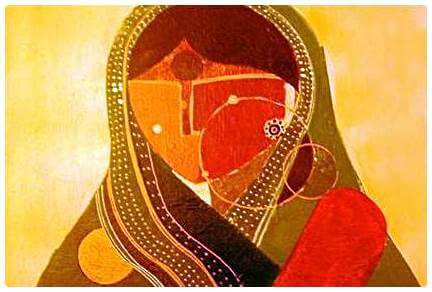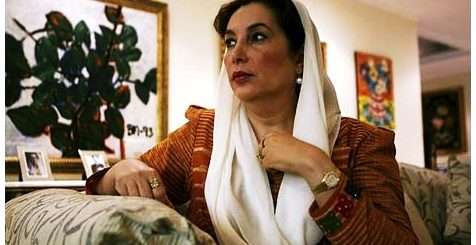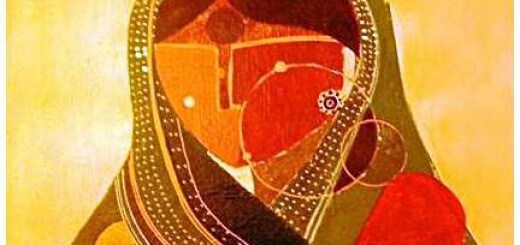Gender Equality: The Western Concept [Part 1]
Since the most vehement criticism of the status of women in Muslim societies comes from West, it is necessary that we explore the genesis and evolution of the concepts of Gender Equality, Feminism, and Individualism in Western societies and find out how these ideas took their contemporary form. These ideas emerged through an evolutionary process, which was the result of Western thought process and the social changes that span over centuries, beginning with Crusades. At the time of Crusades the people of Europe were under the iron grip of Church and a feudal economy. The Crusades impacted them both. First, when as a result of Crusades Muslims lost their control over the
Mediterranean seaway new trade routes became available to Europeans and a mercantile class emerged and trade based economy surfaced. Secondly, partly due to this economic change and partly due to the interaction with Muslim societies, people in Europe started demanding freedom from the clutches of brutal oppression of Church on economy and doctrinal hold on personal freedom. Initially people’s struggle was
against the Pope and Church only, but when Church responded back in the name of religion people eventually turned against the religion as well; and since Church had such an overwhelming control over the lives of people they started considering religion as the greatest hindrance to their well-being. The Church eventually collapsed. This collapse had a very profound effect on economy and on people as individual and as society [29].
The most profound effect of this change on the people was that they started seeing economic freedom and personal freedom as two connubial and inseparable concepts. Thus as the Capitalism evolved through a period of revolutionary economic change between 13th and 19th century – formation of guilds of artisans and merchants (12th -13th century); the discovery of America, Australia and new trade routes (14th – 16th Century); establishment of colonies; the Industrial Revolution (1750-1850) etc. – the economic theory evolved into such ideas as that of doctrine of laissez-faire. This doctrine stresses that an economic system functions best and secures the maximum well-being for the individual and community when there is no interference by any (moral or governmental, sic.) authority. Similarly, at individual level, what started as the guilds of artisans and merchants winning immunity from feudal and Church dues and bonds formed the core of individual freedoms [30]. But at the moral front man’s eternal quest for a guiding compass, which was lost with the collapse of church, gave rise to philosophers and thinkers like Hobbes, Locke, Mill and Voltaire who tried to find a moral compass that on one hand must not include divinity and on
the other hand could keep the economic interests prime at the same time. The unfortunate consequence of these ideas was that the `human being` was degraded into `human resource`; a tool and mean of production; a commodity on which a price-tag could be attached. That provided the necessary seed out of which the concept of Individualism shoots out.
The emergence of the ideal of feminism must also be viewed through this perspective and background. In the emerging Individualist societies women had no other choice but to prove themselves not only as a viable `human resource` but as one that was as good as their male counterparts. This mindset triggered the genesis and subsequent evolution of feminism and today we have essentially three different strands of feministic thought – which can be labeled as First Wave or Equity Feminists, Second Wave or Gender Feminists, and Third Wave or Individual Feminists (I-Feminists), respectively.
The First Wave Feminist movement traces back its roots to Mary Astel, the British author who in 1694-97 proposed the idea of a woman`s college. During the French Revolution, women`s republican clubs demanded that ideals of liberty, equality, and fraternity be extended to women as well [31].
In North America, when the United States Constitution was being written, Abigail Adams and Mercy Otis Warren stressed for the inclusion of women`s emancipation in the Constitution. In 1848, at Seneca Falls, N.Y., the first women`s right convention was held where a declaration of independence for women was issued, which demanded full legal equality, full educational and commercial opportunity, equal compensation, the right to collect wages, and the right to vote. Under the leadership of Elizabeth C. Stanton and Susan B. Anthony, the movement spread
rapidly and soon extended to Europe [31].
By 1920, when in the United States women were enfranchised, they had already won the rights for higher education, entrance into trades and professions, and married women`s rights to property. At that time women were divided on the question of equal standing with men versus some protective legislation. Some protective legislation were enacted in the 19th century that limited the number of hours women could work per week and excluded women from certain high-risk occupations [32].
The World War II drew a generation of women out of home and into workforce, both in North America and Europe; for the very first time women experienced the emotional and financial independence. In 1946 the UN Commission on the Status of Women was established to secure equal political rights, economic rights, and educational opportunities for women throughout the world.
The Equity Feminists of today, conservative in their outlook, associate themselves with the First Wave Feminists; they acknowledge that there are inherent differences between the sexes and seek specific reforms to address issues which they perceive as unequal treatment in society.
The Second Wave or “Gender Feminists” emerged in 1960s. Greatly influenced by Betty Friedan`s 1963 bestseller The Feminine Mystique and incensed with the findings of President Kennedy`s Commission on the Status of Women (pcsw) report in 1964, the movement took a more radical form. The National Organization for Women (NOW) was formed in 1966, to fight the widespread gender discrimination at work as reported by the PCSW investigation. The moderate faction of this new wave of gender feminists, which called themselves “socialist-feminists”
considered Capitalism as the sole source of male dominance; they pressed for such changes as abortion rights, federally supported child care centers, equal pay for women, the occupational upgrading of women, the removal of all legal and social barriers to education, political influence, and economic power for women [33]. On the other hand the radical faction under the leadership of feminists such as Shulamith Firestone, Kate Millett, and Ti-Grace Atkinson, propounded that the gender exists as a social construct and not as a biological fact. They
were the first to criticize the institution of marriage, the nuclear family, normative heterosexuality, violence against women, and sexist health care.
The Gender Feminists of today associate themselves with the radical ideologues of the `60s. This group propounds that any psychological or social differences between men and women are rooted in the oppression of a patriarchal structure that seeks to make women lesser persons than men. They seek to end patriarchy and maintain complete egalitarianism between the sexes [34]. So they seek to abolish all social structures that in their perception support this patriarchy – they propound prostitution, homosexuality, and right to bear children without
the institution of marriage as basic human right. They advocate the gender-neutral translations of the Bible and promote the idea of “goddess
within”. One such feminist, Genie Webster echoes such demands as, “True equality of the sexes will come when God is universally perceived as androgynous”.
The Third Wave or Individualist Feminists are mainly Generation Xers and younger. Their tenets are not as radical as that of Gender Feminists, yet they are generally not as conservative as the equity feminists either and tend to advocate liberal causes such as abortion on demand etc. In the words of Wendy McElroy, I-Feminism is based on the belief that all human beings have a right to the protection of their persons and property. It applies the principle “a woman`s body, a woman`s right” to every issue that confronts women today from
reproductive choices to pornography, economic opportunity to prostitution. In an ideal society the legal system would make no distinction based upon secondary characteristics, such as race or sex but protects rights of each individual equally [35].













